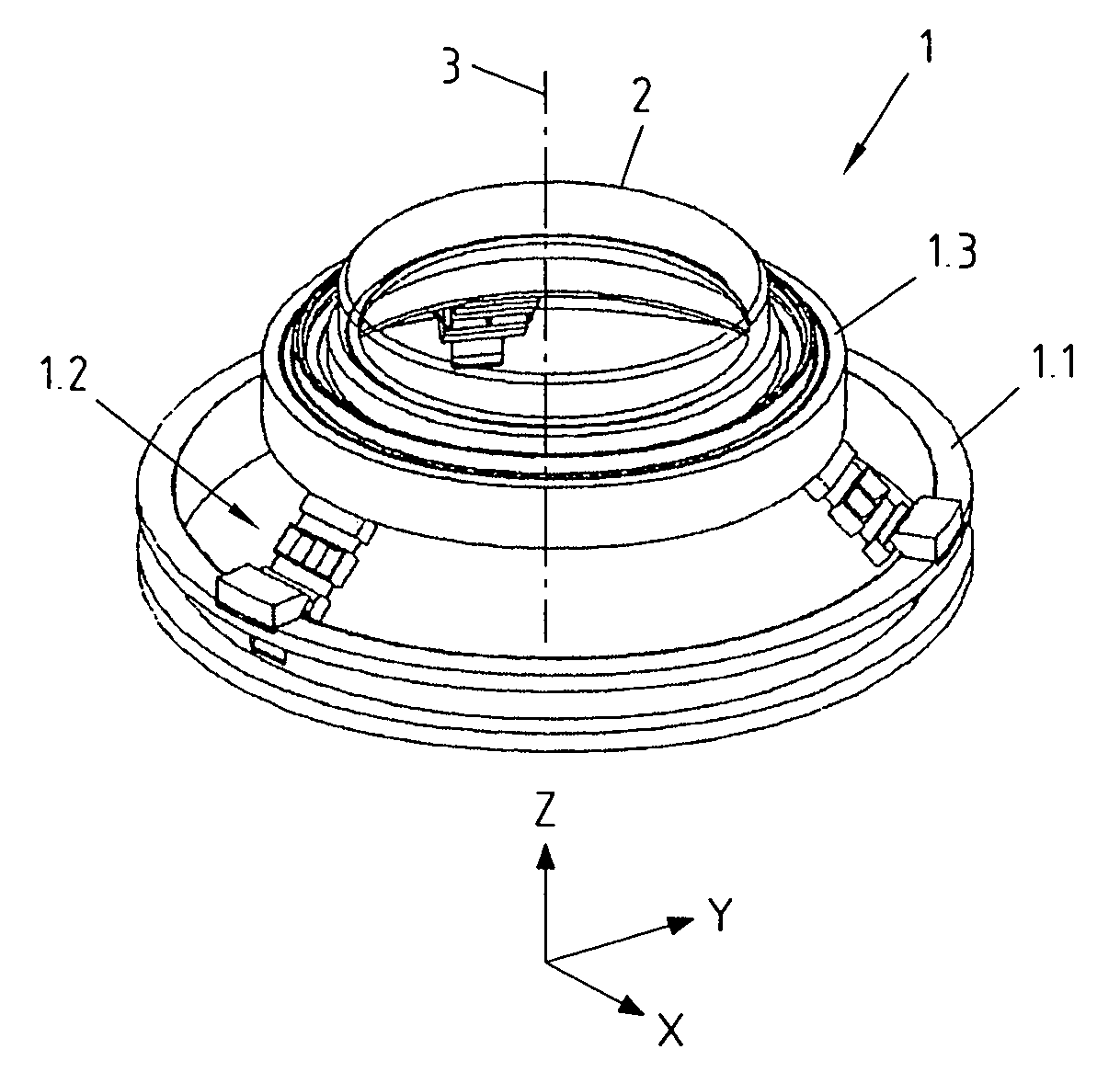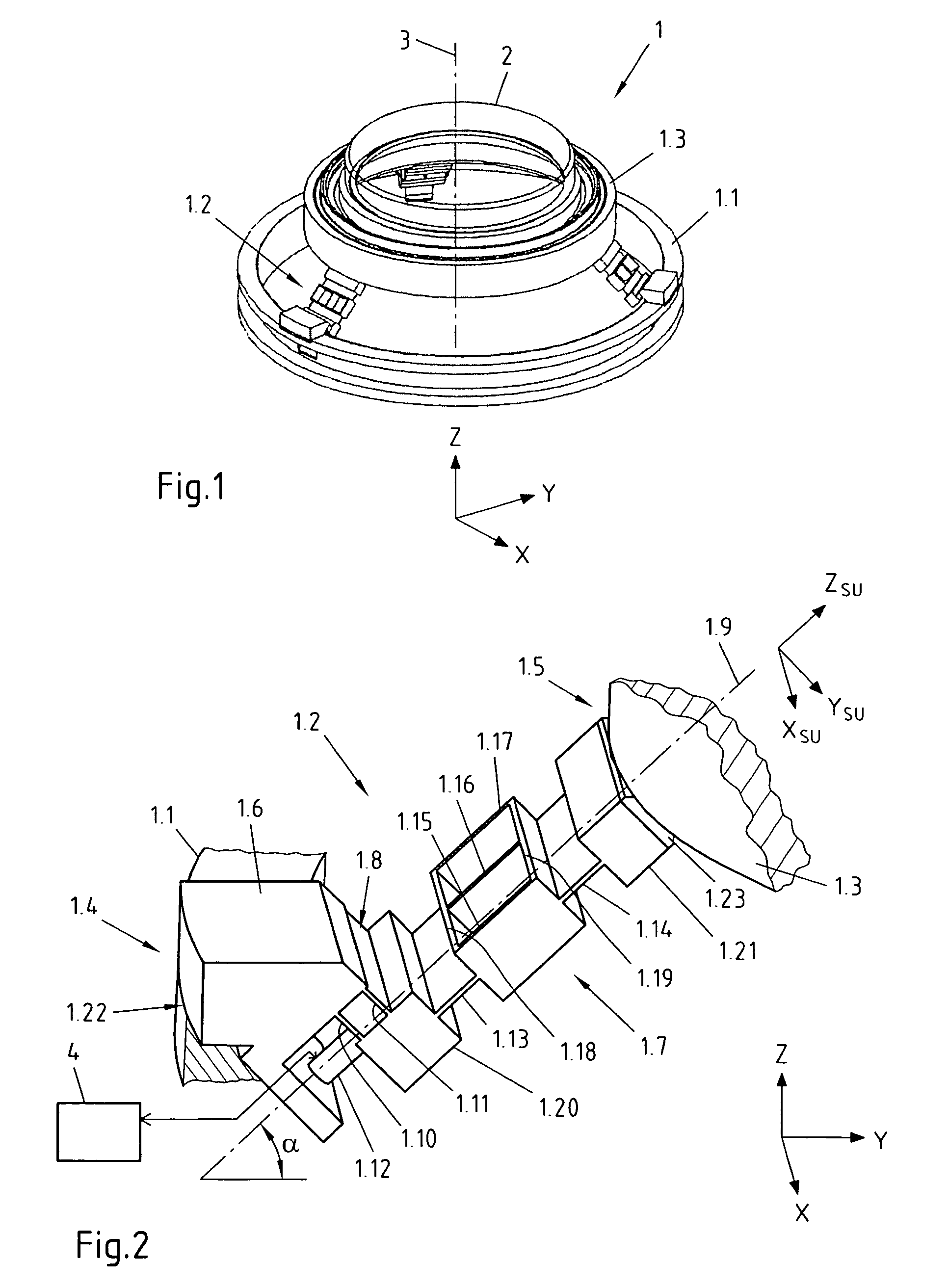Support device for positioning an optical element
a technology of supporting elements and supporting elements, which is applied in the direction of microlithography exposure apparatuses, printers, instruments, etc., can solve the problems of increasing the mass of the optical elements to be moved during adjustment, increasing the stress within the supporting elements supporting the respective optical elements, and increasing the number of numerical apertures of the optical system. , to achieve the effect of reducing design, construction and control effort, high degree of imaging accuracy, and high accuracy
- Summary
- Abstract
- Description
- Claims
- Application Information
AI Technical Summary
Benefits of technology
Problems solved by technology
Method used
Image
Examples
Embodiment Construction
[0029]In the following, a first preferred embodiment of a support device according to the present invention and a preferred embodiment of an optical exposure apparatus according to the present invention comprising a preferred embodiment of a lens barrel according to the present invention will be described with reference to FIGS. 1 to 3.
[0030]FIG. 1 is a schematic perspective view of a support device 1 for positioning an optical element in the form of a lens 2. Anyway, it will be appreciated that, with other embodiments of the present invention, any other type of optical elements may be positioned. The support device 1 comprises a first frame unit 1.1 and three identical support units 1.2 distributed equiangularly at the circumference of the first frame unit 1.1 for supporting a second frame unit 1.3 carrying the lens 2.
[0031]As will be explained in detail further below, the support units 1.2 together are arranged for positioning the lens 2 along a translatory first direction X, a tr...
PUM
| Property | Measurement | Unit |
|---|---|---|
| angle of inclination | aaaaa | aaaaa |
| angle of inclination | aaaaa | aaaaa |
| degrees of freedom | aaaaa | aaaaa |
Abstract
Description
Claims
Application Information
 Login to View More
Login to View More - R&D
- Intellectual Property
- Life Sciences
- Materials
- Tech Scout
- Unparalleled Data Quality
- Higher Quality Content
- 60% Fewer Hallucinations
Browse by: Latest US Patents, China's latest patents, Technical Efficacy Thesaurus, Application Domain, Technology Topic, Popular Technical Reports.
© 2025 PatSnap. All rights reserved.Legal|Privacy policy|Modern Slavery Act Transparency Statement|Sitemap|About US| Contact US: help@patsnap.com



